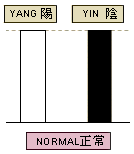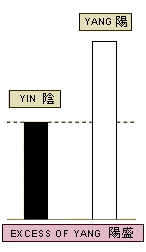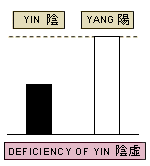Yin Yang Application in the Treatment of Chinese Medicine
In traditional Chinese medicine (TCM), patients are treated as a whole; physicians always take care of the whole body rather than local pathology. On the one hand, physicians eliminate the pathogenic factors to relive symptoms, on the other hand, they regulate the physiological functions to enhance the innate healing ability of the body and ensure a full recovery. The two aspects which are known as "dispelling pathogens" and "supporting healthy energy" respectively, are the primary therapeutic principles of TCM. For this reason, TCM treatment is unlikely to interfere with the normal functions of the body, one of the most important features of TCM.
|
 |
Yin yang theory forms a basic guideline of TCM holistic approach. Since disease is regarded as the conflict between pathogens and healthy energy within the body, individual can recover more easily when direction of this conflict is towards a positive side. It is the universal treatment goal to correct imbalance and resume harmony of the body.
TCM therapeutic strategy is to readjust the body's yin and yang aspects into a new balance state. When one aspect is excessive, the treatment aims at reducing the excess. On the other hand, when one aspect is deficient, the treatment is to tonify the deficiency. If excess and deficiency take place simultaneously, both reducing the excess and tonifying the deficiency are necessary. In other words, physicians try to shift the body into a new balance state by applying measures that are opposite of the condition. Below are some essential aspects of treatment:
- When a deficiency exists, it should be toned up;
- When an excess exists, it should be reduced;
- When too much heat is present, it should be cooled;
- When too much cold is present, it should be warmed;
- When dampness is present, it should be dried;
- When phlegm is present, it should be resolved.
|
| |
|
 |
1. Excess of Yang
This morbid condition is usually induced by an overabundance of pathogens that trigger a fierce struggle within the body. For example, individuals with pneumonia (an infection of the lungs) may have high fever, red face, coarse respiration and a rapid and surging pulse. The symptoms and signs show a relative excess of "heat" and belong to yang characters. Since the yin aspect is still normal, the "excessive heat" indicates the body is predominant in yang aspect (or excess of yang).
Physicians will conclude that the condition is due to invasion of external yang evils, which make the body create "excessive heat". The treatment strategy then relies on cooling down or eliminating the "excessive heat" with "cold" herbs. (The word "cold" is used to describe the nature of certain herbs that have cooling properties.) Once the heat is removed, the body will be in balance again and health is restored. The "heat" that creates in yang excess conditions is named as excess heat. |
| |
|
 |
2. Deficiency of Yin
This morbid condition usually indicates that the body lacks nourishment and lubrication, or declines in cooling, calming, holding and consolidating actions. Since yin and yang mutually restrict and consume one another; when one recedes, the other predominates. In case if the body's yin aspect become deficient, the relative excess of yang aspect develops, leading to mild but very specific "heat" signs such as dry mouth, fever in the afternoon, red cheeks, night sweats, warm palms and soles. This type of heat is called "virtual heat" because it is caused by a yin deficiency and not "real" yang excess. A yin deficient disharmony is commonly experienced by individuals with diabetes, menopause, chronic low fever and tuberculosis. Unlike the condition of "excessive heat" described under yang excess, the "deficient or virtual heat" cannot be treated with "cold" herbs. Rather, the disharmony must be treated using yin nourishing herbs, so as to tonify the body's yin aspect and reestablish a new balance state.
In TCM, yin deficiency often refers to a deficiency of yin fluids such as blood and body fluids. Without sufficient nourishment, excitatory functions become dominant leading to typical symptoms of hot flashes or night sweats. In general, virtual heat symptoms will automatically disappear when the deficient yin is tonfied, and the body resumes its balance.
|
3. Importance of treatment based on syndrome differentiation
Syndrome differentiation (identifying a disharmony pattern) is the premise and foundation of TCM treatment. Physicians must first group the seemingly unrelated clinical symptoms and signs into a particular diagnostic category, which then uses it to decide the treatment. The yin yang category is a compendium of all, which gives physicians a general picture of the patients' disharmony. As the above two cases, both yin deficiency and yang excess have heat symptoms but there are differences in their manifestations. "Excess heat" can lead to a high fever while "virtual heat" may cause just a night fever or a low-grade fever. A person with "excess heat" has a pulse that is rapid and surging, while a person with "virtual heat" has a rapid and fine pulse. These subtle differences in clinical manifestations are what every physician tries to recognize during diagnosis.
TCM methods are usually focused on holistic regulation and possession of dual modulation effects. |
| |
|
|